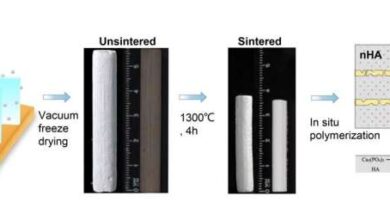Shining a light on helical polymers

Baspar / Iranpolymer Due to their singular properties and the functionality attributed to their unique scaffolding, helical polymers are of particular interest to the scientific community. There are specific points along the polymer chain of these compounds where the sense of the helix changes, which are difficult to identify in solution. Employing photochemical methods, Center for Research in Biological Chemistry and Molecular Materials (CiQUS) researchers have now determined not only the presence of these helix reversals in polymer solution but also to estimated its folding degree. The results has been recently published in Nature Communications. Most of the functions performed by biological molecules such as proteins, peptides or DNA are determined by their three-dimensional conformation. In helical polymers, the structure-function relationship can affect their different applications: misfolding may cause their functionality disappear. Considering the polymer folding degree in solution can determine if the compound is well folded or presents a poorly folded structure that will badly affect to its potential applications. “The most serious limitation when working with these macromolecules is the determination of their degree of folding. That is, to determine if the whole material is folded as a helix, or if some areas remain unfolded,” explains Felix Freire, coauthor of the study and principal investigator at CiQUS. “Furthermore, identifying the direction in which the helices rotate is key to determining the structure-function relationship of these materials.” In this work, a team led by Prof. Freire and Prof. Quiñoa at CiQUS has developed a methodology for quantifying the folding degree of helical polymers. Through a photochemical electrocyclization process, the study conducted by Dr. Francisco Rey and Dr. Rafael Rodríguez consisted of unfolding the material to understand how it was folded. This innovative approach allows them to quantify the folding of these polymers and thus to determine if, on the basis of its structure, their performance can be improved.
More information: Francisco Rey-Tarrío et al, Screw sense excess and reversals of helical polymers in solution, Nature Communications (2023).
phys.org






